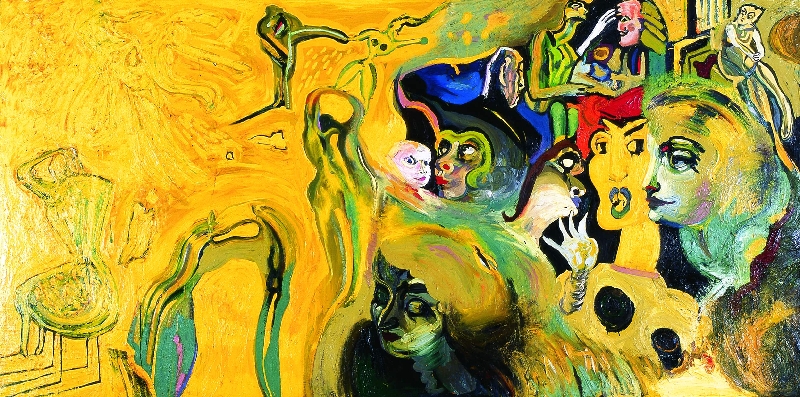The https://english.atlatszo.hu use cookies to track and profile customers such as action tags and pixel tracking on our website to assist our marketing. On our website we use technical, analytical, marketing and preference cookies. These are necessary for our site to work properly and to give us inforamation about how our site is used. See Cookies Policy
Art enthusiast friend of central bank governor faces court charges
One of the biggest promoters of a Hungarian painter who is lately getting more recognition is a failed businessman who is currently targeted by the court for fraud. The same man is a close family friend with the governor of the central bank, which has lately developed a taste for acquiring pieces of art.
Laszlo Kovasznai is a Hungarian painter who passed away in 1983 at the age of 49 from leukemia. His work was and is received with mixed reactions, nonetheless, many involved in Hungary’s art community have recently started making efforts to strengthen the Kovasznai brand and establish the image of a renowned Hungarian artist. One of the most notable proponents is the National Bank of Hungary (MNB), which is seeing intense scrutiny in relation to its foundations and their management of the money that the MNB provided.

The Pallas Athene foundations were established with the declared intent to provide educational courses and train the economists and experts of the future. As it turns out after it took court rulings for them to make their finances public, they are also involved in a wide range of other activities ranging from purchasing Hungarian government bonds, giving support to firms that can be traced to individuals high up in the MNB, on to buying pieces of art. It was the foundations that spent HUF 112 million (€356,000) on buying altogether 34 Kovasznai paintings.
The painter can be closely linked to the family of Gyorgy Matolcsy, the governor of the central bank. The same applies for Janos Komlos, who runs the foundation that acquired the collection in the early 2000s for a nominal fee and then sold some of the pieces to the central bank foundations.
Although the Komlos and Matolcsy families come from greatly different backgrounds, their friendship dates back decades. This was likely the reason that Matolcsy’s father, upon learing that the Kovasznai legacy was found, suggested Komlos to acquire it, which the artists’ heirs eventually supported.
Komlos has a storied past. His ventures in the early ’90s saw him doing business with the likes of former left-wing prime ministers Gordon Bajnai and Ferenc Gyurcsany, well before they reached the peak of their respective political careers. He rose to success over the years with his Öresund Holding, which landed a number of municipality-bought construction jobs.
However, these led to financial disputes with creditors to the extent that Komlos is now facing criminal charges for fraud after the debts his firm amassed. When approached by Atlatszo.hu, Komlos blamed his own “stupidity” for teaming up with partners who eventually proved unreliable and mainly stated that the economic crisis os 2008 that was highly damaging to Hungary was mainly the reason his projects failed.
This is the situation when the Kovasznai opportunity arose. Nonetheless Komlos claims that the money received from the central bank went to the foundation managing the painter’s legacy and was used solely to promote the Kovasznai brand through a major exhibit in London.
The brand-building is set to continue in the future. The foundation is creating a team of experts from various fields to make the Hungarian painter better known at home and abroad. The leaders claim they have no intentions of selling off the significant collection under their supervision, only the few pieces that are needed to finance basic operation.

